Inspiration at the National Arboretum

I recently made a trip to the US Natioinal Arboretum located in Washington, DC. While the most obviously impressive thing there is the Capitol Columns, seen above, there are many less obvious sights to see.
There is the National Herb Garden, which is full of wonderful smells and sights and colors, as well as an education, if you take the time to read a million tiny placards.
There is also a grove of state trees, an asian collection, as well as collections of azaelas, dogwoods, ferns, and perennials. But yadda yadda yadda, here's the really cool stuff:
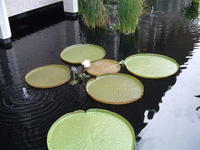 The administrative building is surrounded by moats filled with tropical and hardy water lilies, lotuses, various tropical foliage plants and an enormous school of coi, some as big as three feet long. One of the most impressive lilies is Victoria amazonica, seen to the left. The pads on this sucker can grow as large as six feet across, with a 3-6" spiky lip around the outside. These pads can support the weight of a small person.
The administrative building is surrounded by moats filled with tropical and hardy water lilies, lotuses, various tropical foliage plants and an enormous school of coi, some as big as three feet long. One of the most impressive lilies is Victoria amazonica, seen to the left. The pads on this sucker can grow as large as six feet across, with a 3-6" spiky lip around the outside. These pads can support the weight of a small person. 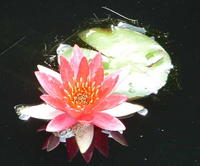
 The water lotus (Nelumbo lutea) is just really cool looking. And check out that seed pod in the middle that will eventually turn brown and stay attached. For some reason it always makes me think of okra. Weird.
The water lotus (Nelumbo lutea) is just really cool looking. And check out that seed pod in the middle that will eventually turn brown and stay attached. For some reason it always makes me think of okra. Weird.
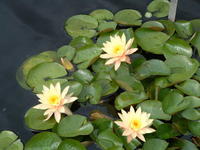
Another one of my favorite portions of the arboretum is the Gotelli Dwarf and Slow-Growing Conifer Collection. Many of the conifers found in this display do not seem all that small - some are more than 20 feet tall. Those that have achieved that size are often much older than you might suspect - some are more than 50 years old. And while 20 feet may not seem dwarf, the full size version of the same tree at the same age may be 100 feet or more. I love dwarf conifers, with all their the shades and textures and colors. They provide an essential service in temperate areas - color, texture, and full screening even in the winter months. I'm always looking for dwarfs, well, truly, miniature conifers to add to my collection. A few of my favorites in the Gotelli Collection are:
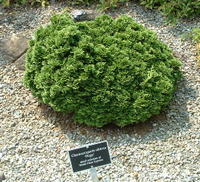
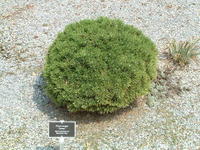
One of the really neat aspects of a large collection is having numerous cultivars of the same species. Consider two cultivars of Scotch Pine, a popular christmas tree:
Pinus sylvestris 'repens'
and Pinus sylvestris 'nana compacta'
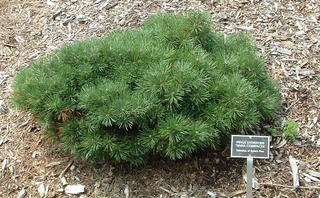
While the normal growth habit of the Scotch pine is up a broad pyramidal shape up to 50' tall, these two mutations are growing in a flat carpet and a dense little bun. And they're all the same specie.
A few more of my favorite dwarf conifers:
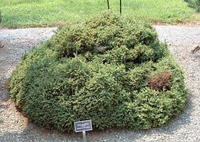 Picea mariana 'nana' a Black Spruce selection...
Picea mariana 'nana' a Black Spruce selection...
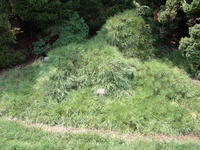 ...and Pinus strobus 'repens', a carpeting version of the common Eastern White Pine.
...and Pinus strobus 'repens', a carpeting version of the common Eastern White Pine.
Have I mentioned that all this damn planting is improving my Latin? It's gone from zero to "eh" in two years. Which I guess is better than nothing.
 And here is a Japanese Red Pine (Pinus densiflora)
And here is a Japanese Red Pine (Pinus densiflora)
Actually, that last one isn't a dwarf. It's a Bonsai. Unfortunately the bits about Bonsai will have to wait until Part 2.
If I get around to it.
Hey, it's past my bedtime, whaddya want?
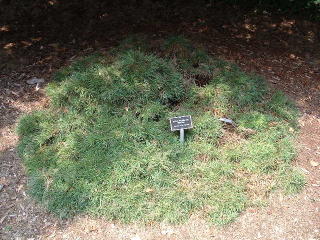

1 Comments:
Outstaning post, Gimpadelic! Can't wait for part 2. Learned a lot here. Love the humongous lilypads. I'll definitely make a point of heading over to the Arboretum when I'm down there again.
Post a Comment
<< Home